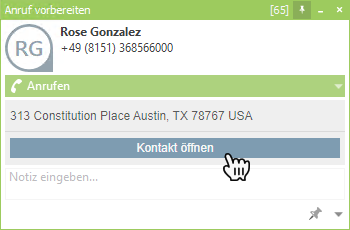Business process integration with Salesforce Lightning
Video tutorial/Recording of our webinar
Business process integration with MetaDirectory and Salesforce Lightning Language: German |
February 2024
What is it all about?
This article describes how to set up a connection between estos products and CRM Salesforce Lightning. In accordance with the article Plan and implement business process integration/system integration in conjunction with estos products, levels 2 and 3 of the integration depth are covered. For the implementation of level 4, which is required e.g. for the use of call activities in Salesforce Lightning, estos will be happy to put you in touch with external service providers on request.
The basis for the implementation of level 2 is initially accessing and obtaining the data from the CRM of Salesforce using MetaDirectory. estos offers its own Salesforce replicator for this purpose.
Example screenshot: MetaDirectory Administration – Configuration – Database – Replicators – Database Wizard with data source Salesforce

The replicated data from the Salesforce CRM can then be used in the usual way in estos ProCall for call resolution, contact search and for the implementation of integration level 3.
Setting up the Salesforce replicator in MetaDirectory
If you start the Database wizard and select the Salesforce import replicator, the following page appears for configuring the connection via the Salesforce Soap API:
Example screenshot: MetaDirectory Database Wizard - Configuration of the connection data to Salesforce Lightning
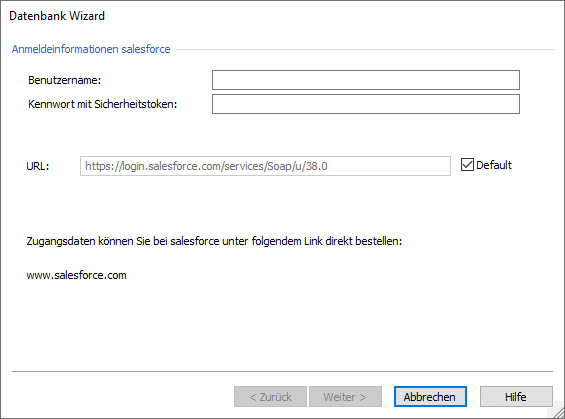
This requires a user account in Salesforce CRM with a name, password and a security token. Password and security token are simply combined.
What is required on the Salesforce side?
Authentication via security token
Today, user accounts with multi-factor authentication (MFA) are normally used to access Salesforce Lightning. The user receives a user name and password and can then enter a unique password, for example, when logging in, which is made available to them via the Salesforce Authenticator app on their smartphone.
Salesforce Authenticator mobile app
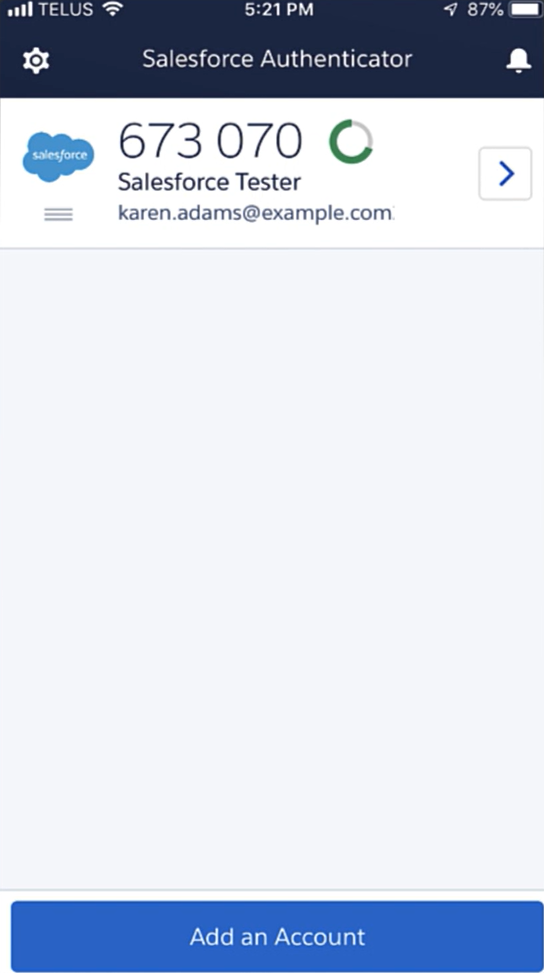
This password is renewed every 30 seconds and is therefore unsuitable in practice for the recurring replication of data using MetaDirectory, even if it can theoretically be used when appended to your own password. You just have to replicate fast enough.
A user account without MFA is therefore important for the practicable use of MetaDirectory on Salesforce Lightning. In this case, the user receives a one-off email with a security token in the form zfexnp7SduAS83SwTZFUbjME (case-sensitive), which they should keep safe and attach to the password of the Salesforce user account when setting up the replicator (<MyPassword>zfexnp7SduAS83SwTZFUbjME) and can then replicate it permanently.
Security token
If the required security token is no longer known, it can be reset in the Salesforce environment and a new token will be sent to you: https://help.salesforce.com/HTViewHelpDoc?id=user_security_token.htm
Procedure via MetaDirectory Database Wizard
Selection of Salesforce objects
After entering the user name and the combination of password and security token you reach the Database Wizard to the selection of Salesforce objects, which can now be replicated with MetaDirectory:
Example screenshot: MetaDirectory - Database Wizard - Selection of Salesforce objects
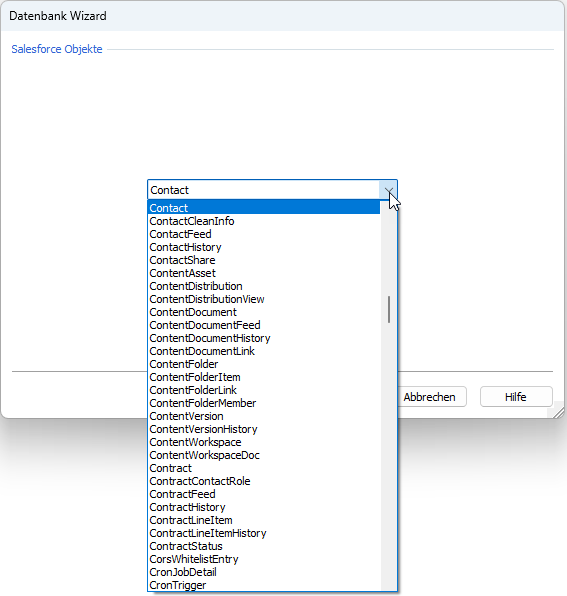
In most cases, access to Contact and Account will probably be desired.
Field assignment
After selecting the Salesforce object, the field assignment is displayed in the next step. There is already a default field mapping here.
Example screenshot: MetaDirectory - Database Wizard - Field mapping for Contact
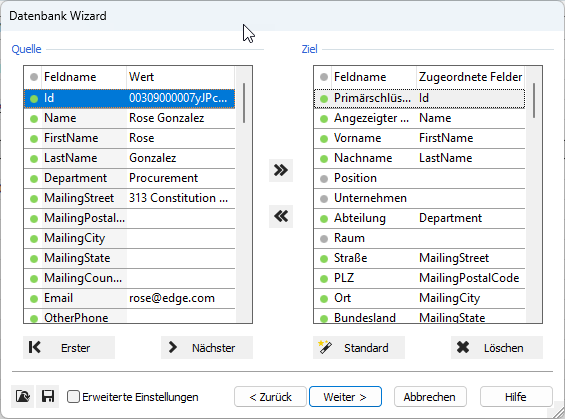
Anpassung der Attribute
Unlike other replicators, the Salesforce Replicator does not offer individual query options similar to SQL statements in ODBC. If additional linked data is required in an object to be replicated, the adjustment must be made directly in Salesforce.
The easiest way to link the replicated contact data to Salesforce, e.g. from estos ProCall, is to create the contact URL with the parameter that uniquely identifies the contact. This can be found in the URL in Salesforce and in the ID attribute of the contact.
Example: ID of the contact from Salesforce
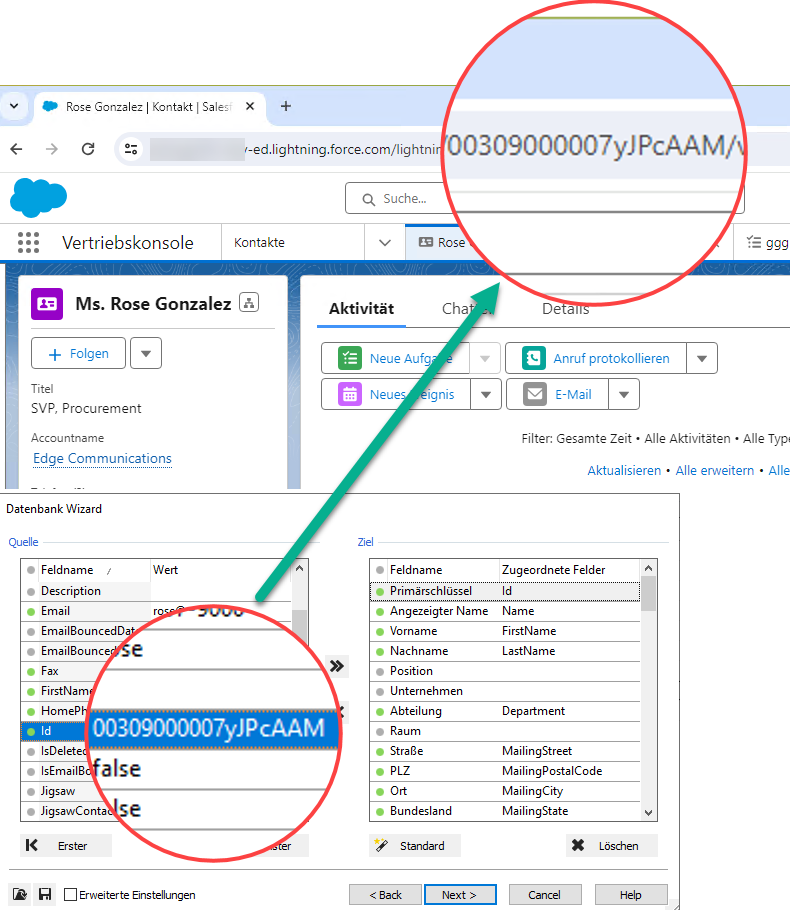
The ID of the contact is unique and is therefore assigned to the primary key field by default;
The URL can now be assembled directly in the wizard.
Usage of fields
Unfortunately, the fields cannot be inserted with the displayed field names. Instead, the name in the database field must be used. The assignment can be found under Database\Database fields in the administrator.
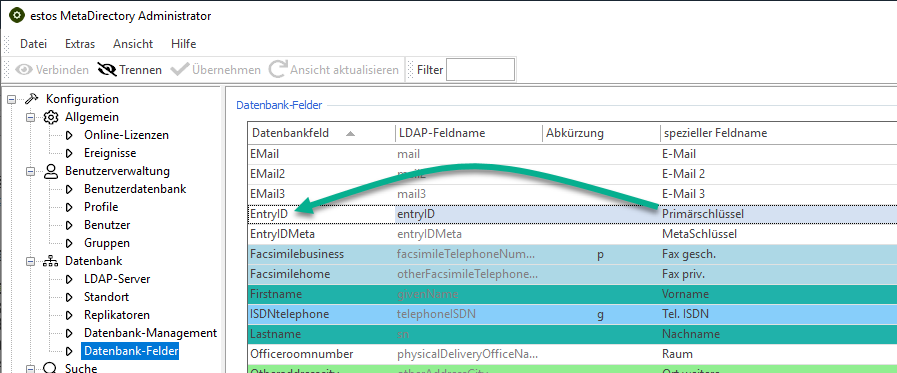
Example: Structure of a contact URL
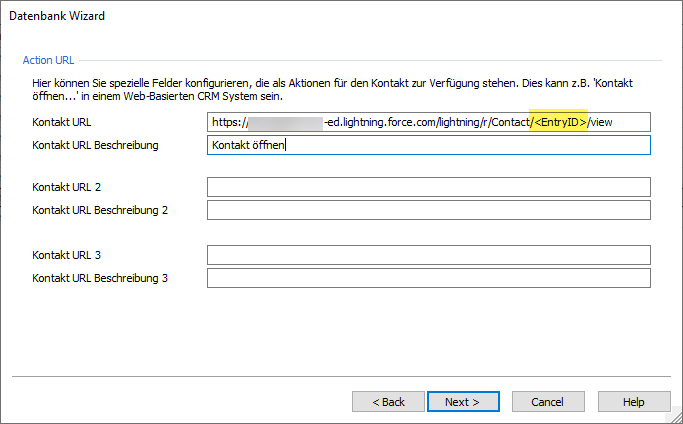
If this data source is now used in estos ProCall, you can open a contact directly from the context menu of a contact found in Salesforce:
Example: Edit contact in estos ProCall
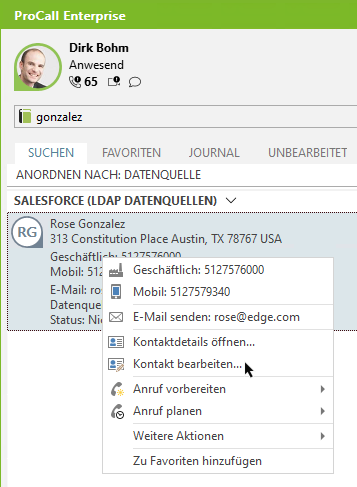
The contact mask shown in Figure Example: ID of the contact from Salesforce opens in Salesforce.
Calling a contact in Salesforce from the call window
The URL set up above can just as easily be made usable via a button in the call window .
To do this, simply activate the first of the three URLs in the profile assigned to the ProCall user via Start editor under Current call partner in the Box: Contact URLs .
Example screenshot: UCServer Administration – User administration – Profiles – Calling up the editor
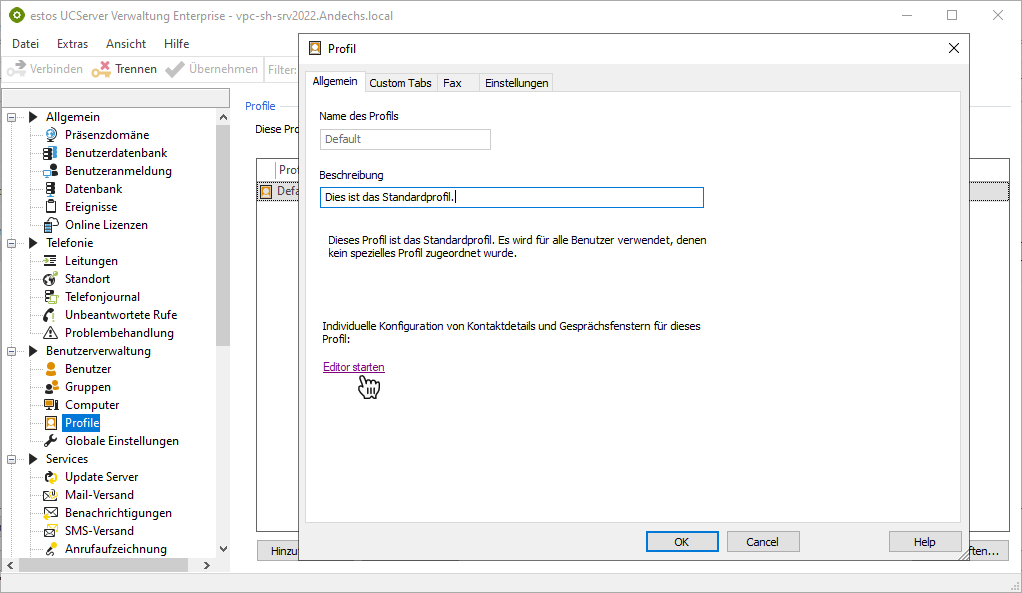
Example: Activating the 1st contact URL in the call window
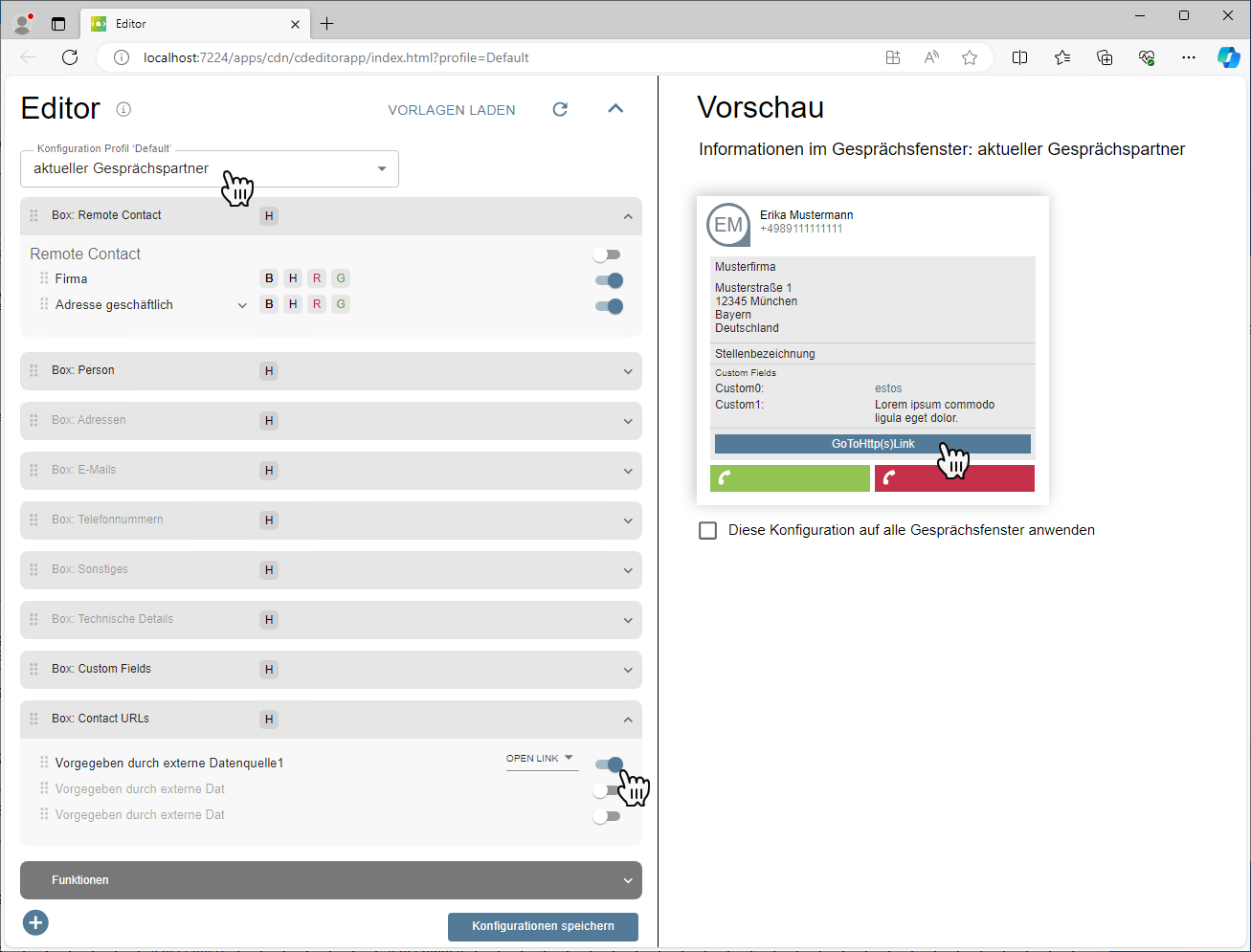
As a result, the call window looks like this:
Example: Call window with contact button
